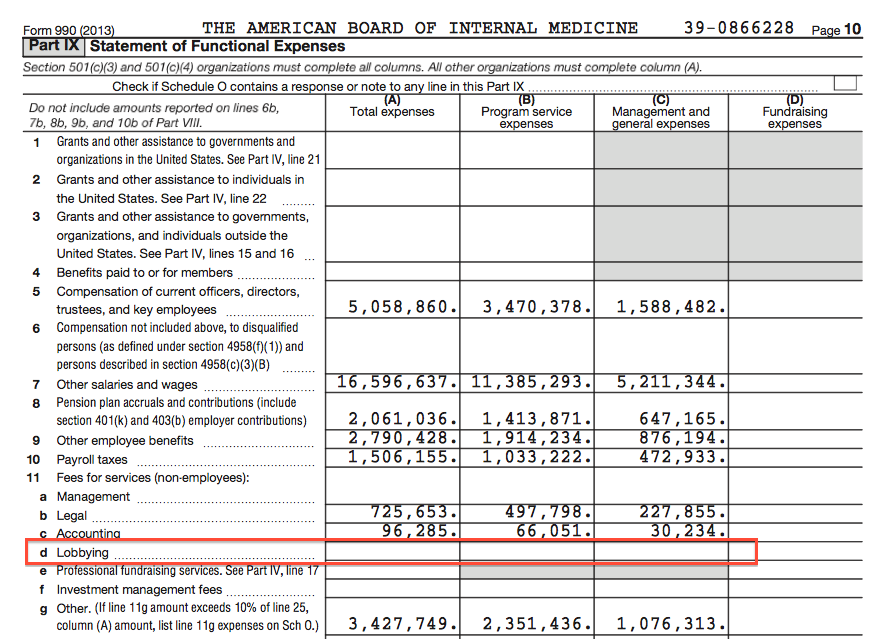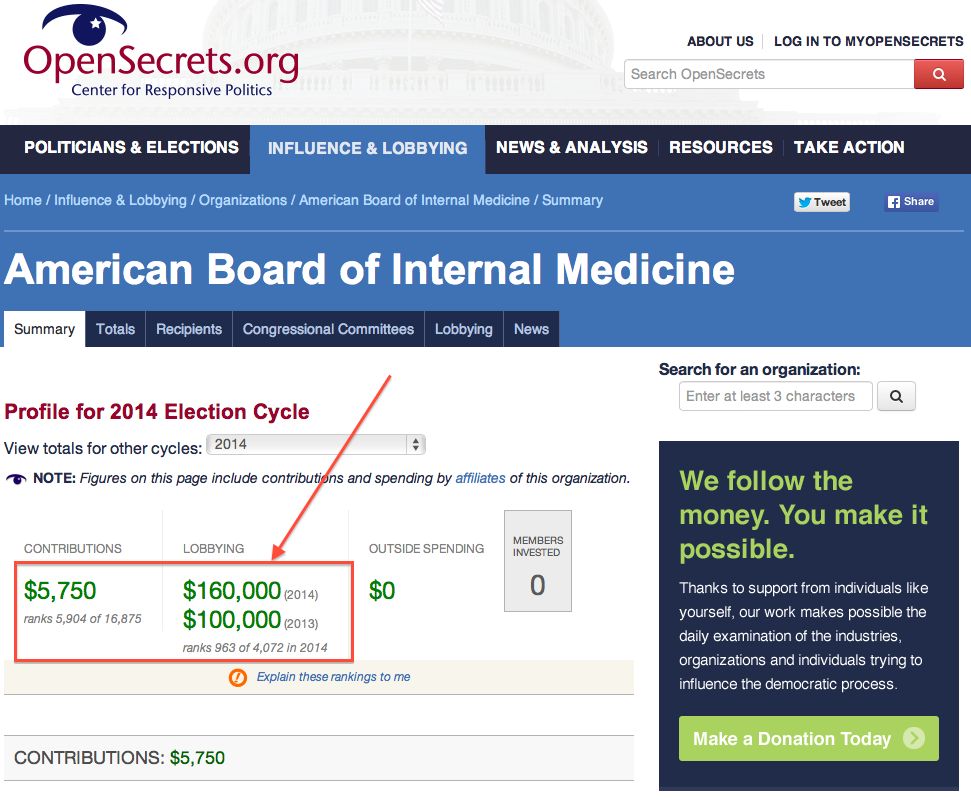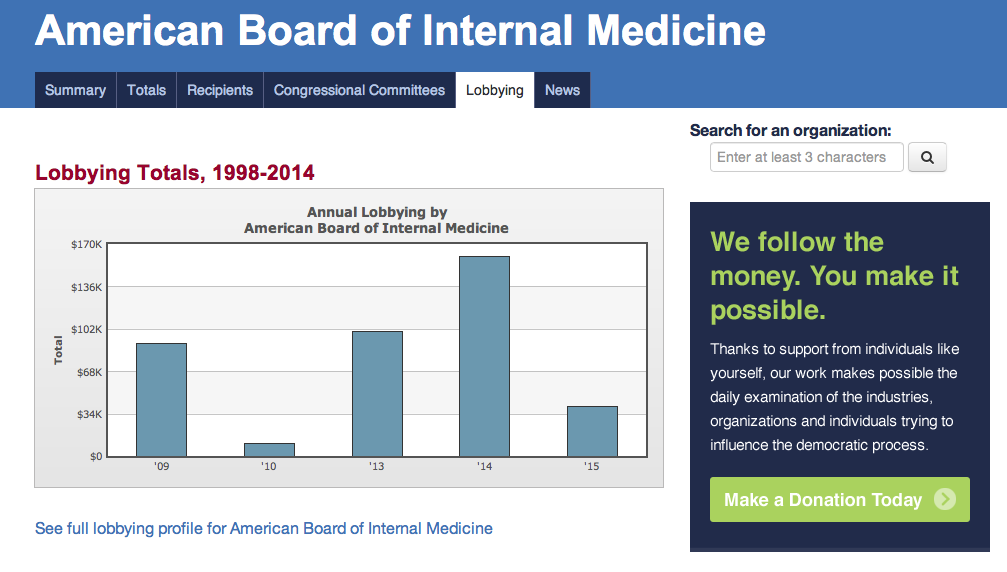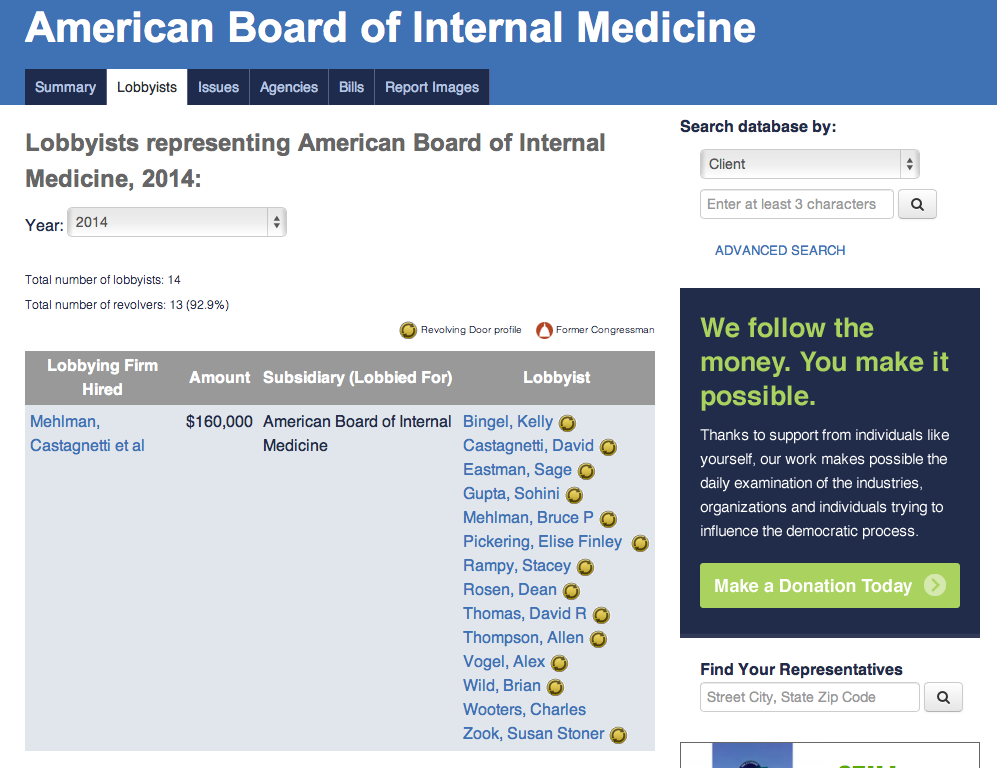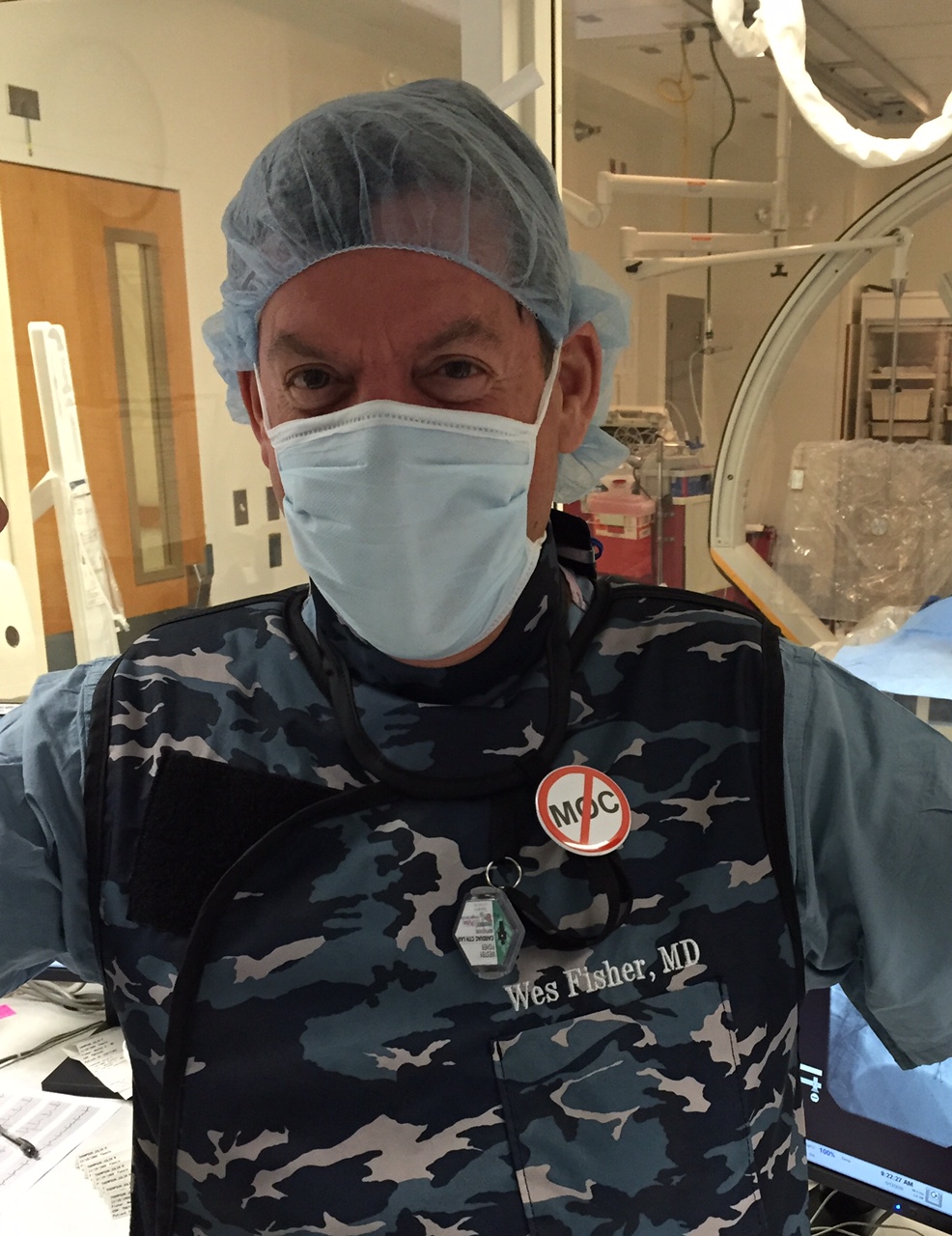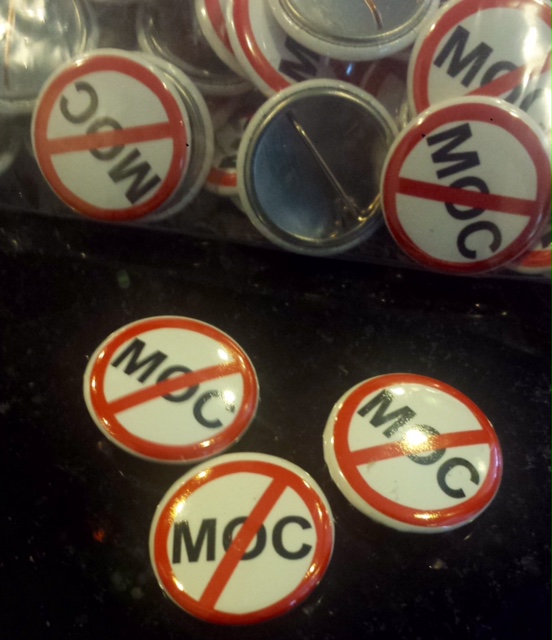"… This debate addresses whether ABIM's Maintenance of Certification (MOC) program contributes meaningfully to the practice of quality EP. I will discuss the importance of MOC as it relates to the practice of quality EP and argue that it should be endorsed by HRS (Heart Rhythm Society). I will NOT discuss other issues such as ABIM finances, fees, salaries, investments, etc."
- Douglas Zipes, MD, Pro-MOC position
Debate on Maintenance of Certification
2015 Heart Rhythm Society Scientific Sessions
To the credit of the leadership of the Heart Rhythm Society (HRS), the American Board of Internal Medicine (ABIM) Maintenance of Certification (MOC) program controversy dominated the first day of the 2015 Heart Rhythm Society Scientific Sessions in Boston, MA. The day began with a "debate" on whether HRS should endorse MOC between Douglas Zipes, MD (protagonist) and Fred Kusumoto, MD (antagonist). The debate was then followed at noon with a one-hour "leadership luncheon" devoted almost entirely to a question and answer period from members concerning MOC. (It was also mentioned that ABIM wants to "explore" removing the requirement that electrophysiologists have to be re-certified every 10 years in
both cardiovascular diseases and cardiac electrophysiology and just re-certify in electrophysiology, a welcome development.) While the luncheon meeting was a packed, standing-room-only affair that had no positive comments made to the HRS leadership, the morning "debate" was not well attended, probably because many had not yet arrived or registered in time to attend. But it was at the morning debate where comments were made attacking the efforts of this blog to transparently disclose the financial practices of the ABIM and their Foundation. I feel those comments warrant further discussion, especially since questions were not solicited from those of us who attended the session.
It was clear from the beginning of the morning debate on MOC that Dr. Zipes didn't like debates. He mentioned that he has only agreed to participate in three debates in his illustrious career, this being one, but he agreed to participate because he believes in the ABIM and the re-certification process they manage. It was also clear he was furious that I had
pointed out on this blog his failure to disclose his prior role at the ABIM as Chair, Chair-elect and Director of the ABIM approximately 10 years ago on the his online HRS disclosures, feeling that these conflicts didn't need to be disclosed because he left his role with the organization long ago. (Perhaps he was justified in this criticism, but because the financial issues at the ABIM that led to this debate occurred in that time frame mentioned, I felt this conflict should have been disclosed and my
blog post explains why.) To his credit, Dr. Zipes' opening statement listed his many accomplishments in the field of cardiac electrophysiology, past and present leadership positions held, full disclosure of his financial and leadership positions held while serving the ABIM, and even poked fun at the fact that he was a U.S. citizen with a US birth certificate and therefore was eligible to run for President of the United States. The audience laughed accordingly.
His defense of the program began with a review the ABIM's origin, mission, it's history as a "standard setting" organization that produced a "publicly recognizable" credential. He emphasized that it is a
physician-led organization that "has roots with membership organizations but must be insulated from them without being isolated. Therefore its an independent organization led by physicians." He then referenced an
ABIM-commissioned 2003 Gallop poll and a
2010 MSNBC poll as evidence of the public's "demand" for MOC. He also repeated the ABIM's canard that physician "skills and knowledge decline with time" without offering supporting evidence to support this claim other than he finds it harder to remember things at the age of 76. Dr. Zipes then said:
What evidence presently exists that MOC, as it is constructed, has value? There's where we have problems. (emphasis mine) The paper published in JAMA 2014 showed that MOC was not associated in the difference in mbulatory care–sensitive hospitalizations, but was associated with a small reduction in cost per cohort of Medicare beneficiaries. (Editor's note: there was no mention that the article was written by ABIM authors). In another study among internists that provided primary care at four VA medical centers, no significant differences between those with time-limited ABIM certification and those with time-unlimited ABIM certification on 10 primary care performance measures.
Dr. Zipes then discussed "the environment" of MOC today:
What is the environment of MOC today? Anger? Frustration? Concern? Questions raised by the physician community regarding MOC dealing with many of the things that I just mentioned. The ABIM when it heard from physicians agreed that it got it wrong and that changes to the MOC program were needed. And the ABIM leadership, Rich Baron, decided an apology, along with meaningful action, was necessary. They did this and have been meeting with various organizations, as well as soliciting outside input to try to get it right.
Dr. Zipes never mentioned that this blog
revealed the potentially corrupt financial dealings of the ABIM in December 2014, well before the ABIM's "
apology" published in February, 2015 nor acknowledged that perhaps this blog's investigative reporting on those dealings was part of the reason an "apology" from the ABIM occurred in the first place. Instead, he went on the attack:
Incitement by irresponsible press articles and blogs is destructive rather than helpful. An article in Newsweek published by Mr. Kurt Eichenwald: "Tens of thousands of internists, cardiologists, kidney specialists and the like say the ABIM forced them to do busy work. There is no purpose rather than to fatten the boards' bloated coffers. … ABIM went from being a genial organization (and I spent fourteen years with the ABIM and never thought of it as a 'genial organization') celebrated by the medical profession to something more akin to a protection racket." (Editor's note: Dr. Zipes failed to mention the follow-up article by Mr. Eichenwald that delved into the ABIM's finances further and addressed conflict of interest disclosure criticisms made by the ABIM from his original article.)
And this blog that was just published recently: "No where in his current disclosures does Dr. Zipes mention his long relationship with ABIM as a paid 'Director,' 'Chair-Elect,' and 'Chair' of the organization. … No doubt Dr. Zipes has good friends at the ABIM and will find it easy to take the protagonist role in the debate." (Editor's note: Yes, my name appeared on the slide.)
If Dr. Zipes felt I was "irresponsible" and "destructive" because I mentioned his lack of disclosure or because I spent countless hours investigating and reporting the publicly-available documents of the ABIM and their Foundation, I am sorry. He certainly was always welcome to place a comment on this blog. I found it interesting that Dr. Zipes mentioned at the outset of the debate (quote above) that he would not discuss the financial matters of the ABIM but seemed more than willing to attack those of us who brought to light the use of
$30.6 million dollars of our testing fees to support the financially questionable activities of the ABIM and their Foundation. It is important to note that the ABIM has still yet to publicly address the allegations made by this blog or
Newsweek with the exception of their
statement to Mr. Eichewald's original
Newsweek story. They also have not released their 2014 Form 990's for the ABIM or ABIM Foundation for the public's review because they filed an "extension."
Dr. Zipes should recall that it was the ABIM, not myself, who
created their ABIM Foundation to market their self-determined definition of "professionalism" that included a "social justice" imperative. It was the ABIM (and its accountants) who appear to have
misrepresented their creation date and domicile of their Foundation on tax forms. It was the ABIM that chose to allow their directors to fly first class (before 2000) to their meetings to write test questions at posh places like the
Ritz-Carlton Laguna Niguel. It was the ABIM who helped fund their Foundation's ironically named "Choosing Wisely" campaign, in part, on the back of repeated multi-million dollar "grants" from physician testing fees. It was the ABIM that decided to purchase a $2.3 million dollar luxury condominium complete with a chauffeur-driven Mercedes S-class town car. It was the ABIM who paid their President and CEO over $8 million for the 10 years she directed the organization while the balance sheet went from -$10 million to -$43 million. To attack me for disclosing public record of the ABIM's actions is misdirected. If this blog is "destructive" to the ABIM because it reported these facts, then so be it. However, if this blog was destructive to Dr. Zipes' reputation because I made an unwarranted disclosure regarding his involvement with the organization at the time these actions occurred, I apologize.
Moving Forward
The Heart Rhythm Society is at a critical juncture. They can elect to side with practicing US cardiac electrophysiologists or side with a non-accountable non-profit organization whose leadership is comprised of non-practicing physicians who serve the government and US hospital's interests. This is one heck of a dilemma. Is there a way to make everyone happy? How might they choose to go forward?
I met briefly with Richard Fogel, MD (current President of HRS) and John Day, MD (current President-elect of HRS) after the leadership luncheon to discuss the situation and offer a suggestion. My idea was remarkably simple and I believe would satisfy many of the concerns of the various monetary "stake holders" in this debate. Importantly, it does not use MOC. The ABIM publicly claims that physician competency erodes over time. I disagree. What erodes one's skills is when they stop seeing patients. (This is
re-certification after all, NOT initial certification!) After all, patients who come to my clinic don't ask me if I'm "board certified," they ask me "
How many of these procedures have you done?"
I believe we could use the
Medicare payments database, recently made available to all, paired with conventional CME records managed by our state licensure boards, as evidence that physicians are keeping up to date and remain competent in their field of practice. The Medicare payments database reports every procedure and payment made to US physicians for that procedure. This number should be made public for each procedure a doctor performs in an easily retrievable format and the Heart Rhythm Society could do just that. If outcomes of those procedures can be generated, all the better. Cumulative data of physician volumes and practice settings could be created. There would be no more irrelevant computer tests. No more life-long payments into a broken, unaccountable organization. Online courses with content created by HRS could compete in an open forum for CME credit. No more getting rich on the backs of working colleagues. Let our actions speak louder than meaningless pieces of paper, paid and highly-conflicted journal citations, and propaganda. Use our state licensure boards to document our continuing medical education credits and accept that the legal community can do their job if doctors step out of line. Proving a doctor can
continue to do his or her job after initial certification should be as simple as that and not require an
alternative board.
Practicing physicians (and I do not make that distinction lightly) have to put their reputation, skill, education, and legal liability on the line every day when we care for our patients. To suggest, even for a moment, that this commitment to our patients and our desire to do them benefit aren't critical, real, or valuable for clinical assessment is ridiculous. Just because the ABIM can't decide if they are about assuring physician (1)
excellence to enter their medical profession or (2)
adequacy to maintain their ability to practice (two very different things) shouldn't be held against working physicians as it has.
At the end of the debate, I think both Drs. Zipes and Kusumoto agreed that the concept of physician
re-certification (especially, the American Board of Medical Specialty's trademarked "Maintenance of Certification" program as it currently exists) is seriously flawed on many levels. It will take brave, honest, and transparent action to correct this reality for our patients' benefit. Hopefully we can move on to a new paradigm (with the Heart Rhythm Society "taking the stick") that creates a mechanism for competency assessment for physicians, patients and payers alike that is measurable, simple, cost-effective and meaningful. This isn't rocket science.
It's called,
measuring clinical experience.
-Wes

